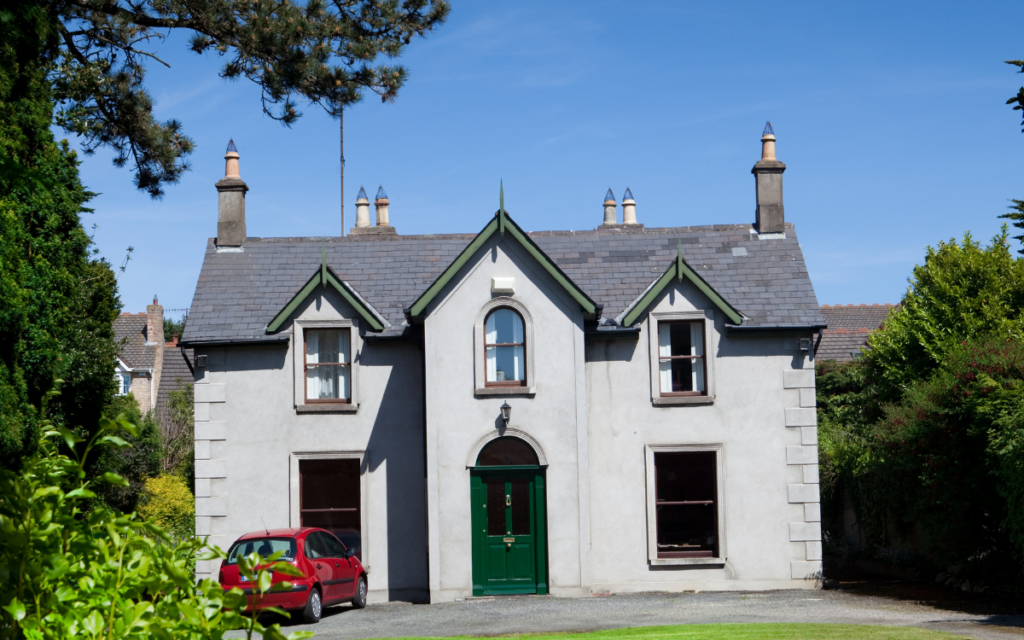What is a BER Certificate?
If you’ve ever bought, sold, or rented a home, you’ve definitely heard of a BER Certificate. The BER is the Building Energy Rating, and it measures the energy efficiency of commercial and residential buildings in Ireland. A building’s BER is represented by a scale of A to G, where A1 is the most energy-efficient rating and G is the least.
A Building Energy Rating (BER) certificate is a measure of the energy efficiency of buildings in Ireland, ranging from A to G, with A-rated homes being the most efficient and G-rated being the least. It is a standard assessment of a property’s energy performance, including factors such as insulation, heating systems, and ventilation. A BER certificate is required when new homes are constructed, sold, or rented out, and it informs owners or potential buyers about the building’s energy performance to help them consider energy efficiency in their housing decisions.
The certificate also comes with an advisory report that provides recommendations for energy performance improvements. This aspect is crucial, as it does not only assess current energy efficiency but also guides homeowners towards potential enhancements to save energy and reduce costs. Notably, the BER certificate is akin to the energy labels found on household appliances, which serve to inform consumers about the appliance’s level of energy consumption, thereby allowing for more informed choices when purchasing new appliances.
Understanding BER Certificates
A Building Energy Rating (BER) Certificate is a definitive indicator of a property’s energy efficiency. It facilitates comparisons between properties, advising owners and potential buyers on the energy performance.
BER Explained
BER stands for Building Energy Rating and measures a building’s energy performance. The BER certificate, which must be produced for new and existing homes when offered for sale or rent, displays this rating. It illustrates how much energy a property typically consumes for heating, hot water, ventilation, and lighting. The certificate is complemented by an advisory report with recommendations for enhancing the property’s energy efficiency.
Importance of BER in Property Transactions
When transacting property, the BER certificate plays a crucial role. For buyers and tenants, it provides a clear illustration of a property’s energy consumption. This helps them to make informed decisions on the property’s potential energy costs. The BER is particularly essential in Ireland, as mandated by law.
BER Rating Scale
The BER cert ranks the building on a scale from A to G, similar to the labels on household appliances;
- A – represents the most energy-efficient building
- G – denotes the least efficiency
| Rating | Efficiency |
|---|---|
| A | Very High |
| B | High |
| C | Moderate |
| D | Low |
| E | Very Low |
| F | Poor |
| G | Very Poor |
An A-rated home is typically more expensive to purchase or rent due to its energy savings in the long term, while G-rated properties may require significant investment to improve their energy performance.
The Assessment Process
The Building Energy Rating (BER) assessment process is a systematic procedure to determine a property’s energy efficiency. It encompasses a physical survey by a qualified assessor and results in an advisory report detailing potential improvements.
Steps in BER Assessment
- Initial Documentation: A BER assessor must first collect all relevant documentation about the property, including its design, orientation, and construction details.
- On-Site Survey: The assessor conducts a thorough survey of the property. This includes examining key components such as insulation, windows, and heating systems that contribute to the building’s overall energy usage.
- Data Analysis: Information gathered from the assessment is input into the Dwelling Energy Assessment Procedure (DEAP) software to calculate the energy performance.
- Rating Assignment: The property is then given a rating from A to G, with A-rated homes being the most energy efficient and G-rated the least.
- Advisory Report Generation: Along with the rating, an advisory report is produced, offering tailored recommendations for enhancing the property’s energy efficiency.
Role of the BER Assessor
The role of a BER assessor is multifaceted and requires meticulous attention to detail. Assessors are certified professionals equipped with the knowledge and tools to accurately gauge the energy performance of a building. They must:
- Conduct comprehensive surveys of properties, noting elements that influence energy consumption.
- Utilise the DEAP software to process data and embody a property’s energy characteristics.
- Issue a BER certificate reflecting the accurate energy rating of the property.
- Provide an advisory report that assists property owners in identifying actionable steps to improve energy efficiency.
Energy Efficiency Components
The efficiency of a home’s energy consumption is greatly influenced by its structural and mechanical systems. A Building Energy Rating (BER) Certificate reflects how these components and systems affect the property’s overall energy performance.
Insulation and Building Fabric
The insulation quality within walls, roofs, and floors has a profound effect on a property’s thermal efficiency. Proper insulation acts as a barrier to heat loss during the winter and heat gain during the summer, which can substantially reduce energy bills related to space heating.
Heating and Hot Water Systems
Heating systems, including boilers, heat pumps, and radiators, dictate the efficiency of space and water heating. Energy-efficient systems reduce the amount of electricity or gas used, thus lessening the impact on energy bills. The proper sizing and maintenance of these systems are essential for optimum performance.
Windows and Doors
Double or triple-glazed windows and properly sealed and insulated doors prevent heat escape, thereby lowering heating demand. High-quality windows and doors are crucial in maintaining a building’s thermal envelope, which directly influences a property’s BER.
Lighting and Electrical Efficiency
Energy-efficient lighting, such as LED bulbs, coupled with smart electrical systems, can result in significant electricity bill savings. These systems minimise wasteful energy use and contribute positively to a property’s overall energy rating.
Improving Your BER
Improving a Building Energy Rating (BER) is essential for increasing a property’s energy efficiency, reducing energy costs, and enhancing overall comfort. Methods to achieve a better BER involve strategic home improvements and utilising available grants for upgrading energy systems.
Home Improvement Tips
Insulation: A key strategy is to insulate the roof, walls, and floors which can significantly restrict heat loss.
- Loft insulation: Aim for a minimum depth of 270mm where applicable.
- Cavity wall insulation: Ensure cavity walls are properly filled with suitable insulation material.
- Floor insulation: Installing insulation beneath floorboards can be highly effective.
Heating Systems: Upgrading to more efficient heating systems can also make a substantial impact.
- Boilers: Opt for a high-efficiency condensing boiler.
- Heat Pumps: Consider air or ground source heat pumps that can provide greater efficiency compared to traditional systems.
Ventilation: Adequate ventilation is crucial for maintaining indoor air quality, especially with increased insulation.
- Controlled ventilation: Helps maintain energy efficiency while providing fresh air.
- Windows: Installing double or triple-glazed windows adds to thermal retention.
Grants and Support for Upgrades
SEAI Grant: The Sustainable Energy Authority of Ireland (SEAI) offers various grants to homeowners for energy-efficient upgrades.
- Insulation Grants: Supports insulating attics and walls.
- Heat Pump Grants: Financial assistance for installing heat pumps.
- Heating Control Grants: To upgrade heating system controls.
Homeowners should ensure these upgrades align with the SEAI’s grant requirements to avail themselves of financial support. Applying for these grants can make the transition to a more energy-efficient home more affordable and attainable.
Regulatory and Legal Aspects
In Ireland, the Building Energy Rating (BER) certificates are a legal requirement that offer standardised information pertaining to the energy performance of properties, which is pivotal for property transactions and compliance with national guidelines.
BER for Selling and Renting
When selling or renting a property, building owners are mandated by law to provide a BER certificate to prospective purchasers and renters. This requirement ensures that buyers and tenants are informed about the energy efficiency of the property. Estate agents must include the BER details in all advertisements, reflecting the property’s energy performance.
Compliance and Guidelines
To ensure compliance, the Irish government has established a set of guidelines under Statutory Instrument (SI) 666 of 2006. These regulations mandate that owners obtain a BER certificate, which must be produced upon demand by a prospective buyer or tenant. The assessment must be performed by a registered BER assessor to maintain the integrity of the process. Failure to comply with these requirements can result in penalties, underscoring the importance of adhering to the law.
Technical Details and Calculations
To ascertain a property’s energy efficiency, the Building Energy Rating (BER) certificate employs rigorous technical analysis. This process utilises specific software and methodologies that yield actionable insights through an advisory report.
DEAP Software and Methodology
The Dwelling Energy Assessment Procedure (DEAP) is the software used to calculate a home’s energy performance for generating its BER. An assessor—typically an engineer or architect trained in the methodology—uses DEAP to input various data points about the property. These include:
- Insulation levels
- Heating system efficiency
- Ventilation characteristics
- Renewable energy technologies
DEAP uses this data alongside default values that represent typical energy usage patterns. The result is a BER that reflects the potential energy performance of a dwelling, ranging from A1 (most efficient) to G (least efficient).
Understanding the Advisory Report
The BER assessment is complemented by an advisory report. It is a vital document because it provides tailored recommendations for improving a property’s energy efficiency. The recommendations may include:
- Upgrading insulation
- Installing more efficient heating systems
- Incorporating renewable energy sources
The energy assessor creates this advisory report based on the data analysed by the DEAP software. The advice within the report helps property owners understand which specific changes could lead to a better BER rating and, thus, a more energy-efficient and cost-effective home.
Beyond BER: Sustainability and Environmental Impact
Building Energy Rating (BER) certificates assess the energy performance of properties, with a focus on sustainability and the reduction of environmental impact in Ireland. This assessment encourages the utilisation of renewable energy resources and aids in the transition towards a more energy-efficient and environmentally friendly society.
Carbon Footprint and Renewable Energy
A key aspect of evaluating a property’s energy efficiency is understanding its carbon footprint. A home’s BER reflects the carbon emissions associated with its energy consumption. The energy label attached to a property indicates how much energy is required for heating, hot water, ventilation, and lighting. Properties that incorporate renewable energy sources, such as solar panels or wind turbines, tend to have a lower carbon footprint, which is reflected in a better BER rating. By prioritising renewable energy, homeowners can reduce the environmental impact and contribute to a sustained reduction in greenhouse gas emissions.
- Benefits of Renewable Energy Use:
- Reduction in carbon emissions
- Improved energy label rating
- Enhanced long-term sustainability
Future-Proofing Homes Through BER
Future-proofing homes involves making upgrade works to improve energy efficiency and comfort. These upgrades not only reduce the energy demand of a property but also enhance its market value. From better house insulation to more efficient heating systems, the advisory report that accompanies a BER certificate offers specific recommendations to homeowners. Implementing these recommendations is an investment in the future, ensuring that homes are not only more comfortable and cheaper to run but also have a lesser impact on the environment.
- Key Upgrade Works for Improved BER:
- Installation of high-efficiency boilers
- Upgrading insulation in walls, roofs, and floors
- Installing advanced ventilation systems
Through careful consideration of energy efficiency and commitment to renewable energy, homeowners in Ireland can ensure their properties are aligned with environmental sustainability goals and are prepared for a greener future.
Additional Resources and Support
Individuals and businesses can access various resources when seeking support or further information regarding a Building Energy Rating (BER) Certificate. Key outlets include the Sustainable Energy Authority of Ireland (SEAI) and the National BER Register, both of which provide extensive guidance. They also have access to the BER helpdesk for personalised assistance.
SEAI and National BER Register
The Sustainable Energy Authority of Ireland (SEAI) is the primary source for comprehensive advice and support related to BER certificates. The SEAI’s website is a valuable resource for understanding energy efficiency and accessing SEAI grants to improve a building’s rating. The SEAI also maintains the National BER Register, an essential tool for searching and retrieving BER certificates and Advisory Reports.
- SEAI Grants: Homeowners can apply for grants to finance improvements in energy efficiency, thus bettering their BER.
- BER Helpdesk: For tailored support, the SEAI offers a helpdesk that can answer queries and provide guidance on the BER process.
| Resource | Contact Information | Services Offered |
|---|---|---|
| SEAI | www.seai.ie | Grants, advice, information |
| National BER Register | Accessible via SEAI website | BER search and certificate access |
| BER Helpdesk | Contact through SEAI’s website | Personalised assistance and support |
Accessing Help and Information
To obtain further information or assistance with BER certificates, property owners and occupiers can directly access a host of resources:
- SEAI Website: Hosts information on how to improve a BER rating and the available financial supports.
- National BER Register: Allows users to look up BER certificates for buildings across Ireland.
- BER Helpdesk: Provides expert help on specific queries, from certificate details to interpreting Advisory Reports.
Individuals seeking to improve their property’s energy efficiency or to understand their current BER rating can leverage these resources effectively for informed decision-making.
BER Rating and Certificate: Frequently Asked Questions
How can one acquire a Building Energy Rating certificate?
To obtain a Building Energy Rating (BER) certificate, the property owner must contact an accredited BER assessor. The assessor will evaluate the property’s energy performance and issue the certificate upon completion of the assessment.
What constitutes an efficient Building Energy Rating for a residence?
An efficient Building Energy Rating for a residence is typically considered an ‘A’ grade, which signifies that the property is highly energy-efficient, leading to lower energy consumption and reduced utility costs.
What does the Building Energy Rating register entail?
The Building Energy Rating Register is an official record that stores the details of all BER certificates issued. It provides a standardised framework for comparing buildings’ energy performance and ensures transparency for potential buyers or tenants.


